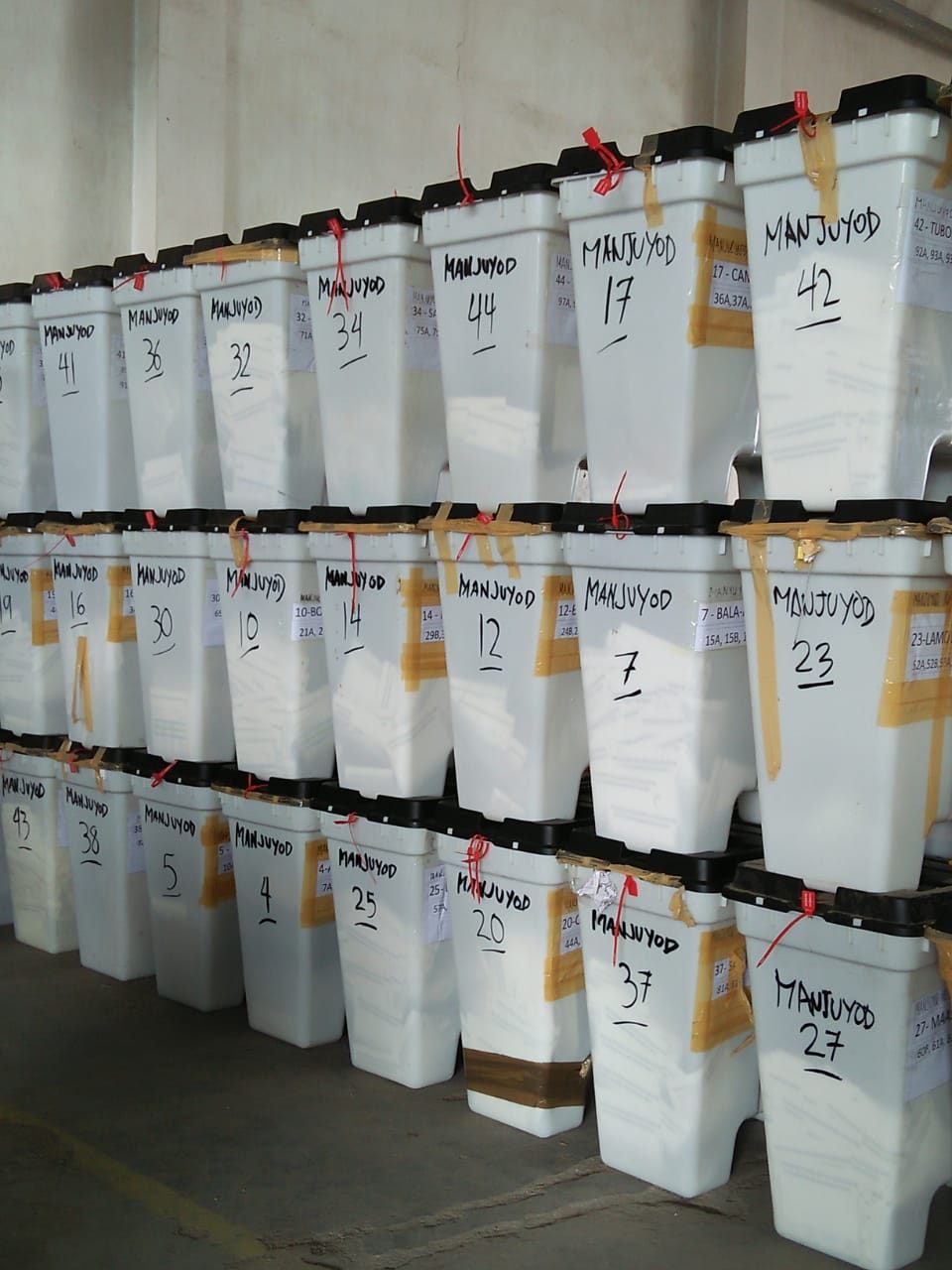SUMMARY
This is AI generated summarization, which may have errors. For context, always refer to the full article.


MANILA, Philippines – The Supreme Court, as the Presidential Electoral Tribunal (PET), recently ruled to do away with the contentious shading thresholds as basis for segregating ballots in the protest filed by former senator Ferdinand Marcos Jr against Vice President Leni Robredo.
In a step that could fast-track the recount, justices of the tribunal unanimously agreed to refer to election returns (ERs) – the document reflecting totals from polling precincts – in determining how the votes would be credited to either candidates.
“The Head Revisors are hereby directed to refer to the election returns to verity the total number of votes as read and counted by the Vote Counting Machines,” the 21-page resolution, promulgated on Tuesday, September 18, read.
The resolution amends Rule 62 (Votes of the Parties) of the PET Revisor’s Guide, “effective immediately.” Its amended part now reads: “The segregation and classification of ballots shall be done by referring to the Election Return (ER) generated by the machine used in the elections.”
Debate ends on 25% and 50% ballot shading thresholds: Marcos, who lost to Robredo by a narrow 263,473 votes in the 2016 vice presidential election, has identified 3 pilot provinces in his protest: Camarines Sur, Iloilo, and Negros Oriental – the first one being Robredo’s home province, where she won overwhelmingly.
Should significant discrepancies be discovered between the previously credited number of votes and the recounted votes in these 3 areas, the ballots from 24 other provinces and cities that Marcos questions would be recounted.
However, the recount that started last March has been delayed by motions from both camps. Robredo, for one, asked the PET to set aside its rule that only an oval that is shaded by at least half would be counted as a vote for the candidate whose name corresponds to the oval.
The Vice President wanted the tribunal to credit to candidates even the ovals that were shaded by at least 25%, citing the shading threshold that the Commission on Elections (Comelec) itself adopted in the 2016 polls. A higher threshold would’ve caused both candidates to lose votes.
The PET however had not been convinced, saying that the Comelec adopted a shading threshold of 25% only for the random manual audit and not for the actual counting of votes by the machines. The RMA report therefore didn’t provide a sufficient basis to revise the PET rules, which had used the 50% shading threshold in past elections, the tribunal said.
With the September 18 resolution, the PET “resolves to partially grant” Robredo’s motion to set aside the use of the 50% shading threshold in the revision proceedings.
Decrypted ballot images ‘tedious’ to check: The PET said it also considered checking whether a certain extent of shading was credited to a candidate by comparing the actual ballots (stored in the ballot boxes) with the ballots’ images that are decrypted and printed out of the vote counting machines (VCMs).
The tribunal said, it “finds it to be a promising solution to this threshold predicament,” but it would be an “extremely tedious process” that could only result in “needless delay” if done on every single ballot.
With that, the resolution also denied Marcos’ motion registering “strong opposition” to the use of encrypted ballots in reviewing and recounting of ballots.
How the ERs will help in segregating votes: Copies of an election return are printed from the vote-counting machine when the polling precinct closes and all ballots are already fed and encrypted into the VCM. The ER reflects the total votes that each candidate got in that precinct.
The 27 areas whose results are being contested by Marcos cover 39,221 clustered precincts (132,446 established precincts).
What the PET revisors will do is to segregate the ballots for Robredo and Marcos according to the black ink in the ovals beside their names – regardless of whether the shaded part is at least 25% or 50% of the ovals.
Once these are totalled, the figures will be compared with the totals reflected in the ERs. The parties will then be allowed to make claims on and objections to the vote count.
“The objective of the revision process of mimicking or verifying/confirming how the VCMs read or counted the votes can be achieved by referring to the election returns (ERs) generated by the VCMs used in the 2016 elections,” the resolution, penned by Justice Alfredo Benjamin Caguioa, explained.
“Thus, in the segregation of the ballots of the parties, the PET HRs (head revisers) shall be guided by the number of votes indicated in the ERs. In this way, the reading of the VCM is mimicked and verified/confirmed. Also, in using the ERs generated by the VCMs used in the 2016 elections and not merely adopting a specific threshold, the Tribunal’s revision procedure will be more flexible and adaptive to calibrations of the voting or counting machines in the future,” it added.
The tribunal said whatever numbers are generated during this revision stage would be considered “preliminary figures” since PET may reject or admit the votes.
Final decisions on contested numbers will be made during the subsequent “appreciation stage” in the process.
The new rule at the revision stage will be applicable only to ballots that have yet to be checked. Those that were already revised before September 18 will be verified against the ERs during the appreciation stage.
Ten other justices, including Chief Justice Teresita Leonardo de Castro, concurred with Caguioa’s resolution. Justice Antonio Carpio was on leave, while Justice Diosdado Peralta was out on official business.
Read the Presidential Electoral Tribunal’s resolution here:
– Rappler.com
Add a comment
How does this make you feel?
There are no comments yet. Add your comment to start the conversation.